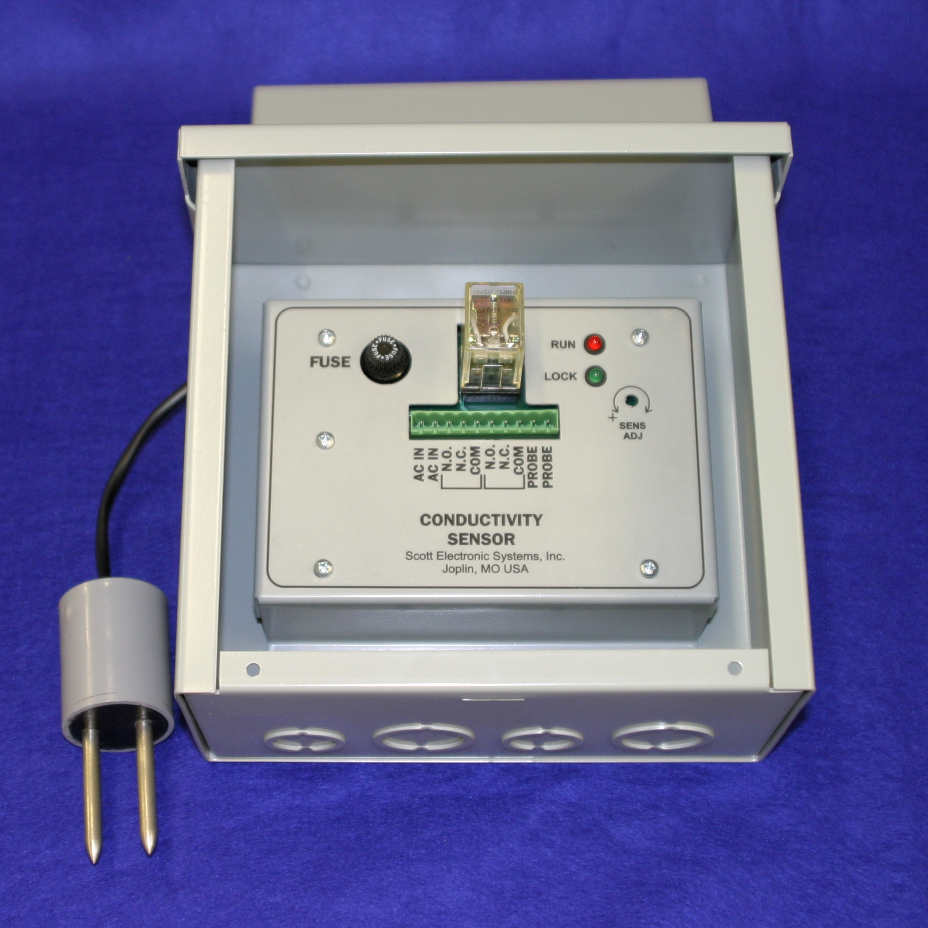The conductivity sensor is designed to sense the conductivity of liquid levels in a tank or pit. It utilizes an adjustable electronic sensor to detect various thresholds of electrical conductivity in fluids. The control can be adjusted to set the conductivity threshold so that the sensor will send a signal when the ionization level in the fluid is above the preferred amount. This can be used to determine whether the level of brine in a solution is greater than the custom threshold, or to distinguish when the probe is submersed in an ionized solution versus a nonconductive fluid such as oil. The system can be attached to a pump to safely remove runoff water by isolating various oils which float on water and pumping the water underneath from the pit or tank. This prevents harmful oils from being pumped into an outdoor water reservoir or stream.
The conductivity sensor can operate on 120V or 240V AC (jumper selected), and multiple devices can be placed into a tank for redundant systems. The NEMA-3R rated IP32 painted enclosure will withstand outdoor conditions, measures 8" x 8" x 4", and can be fitted with attachments to mount on various surfaces. The standard probe assembly is supplied with a 15 foot cable, but can be manufactured with up to a 25 foot cable. The potted stainless steel probe is fitted with a waterproof base that can be cemented to a 1" PVC pipe so that no moisture is introduced to the cable. The unit can be fitted with a solid state relay if desired. Each unit comes with a control to adjust the conductivity threshold on-site for individual needs.
